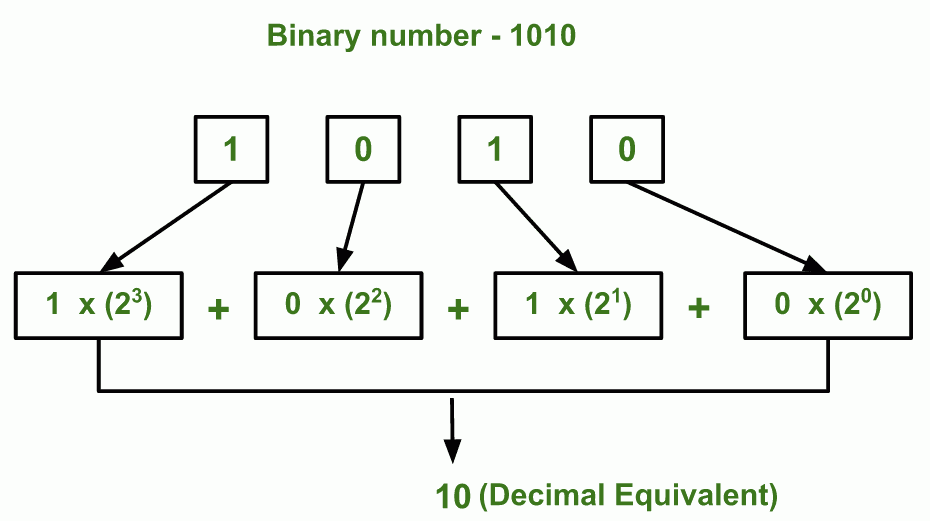Conversion of Decimal into Binary

The conversion of a number in a binary system to decimal can be termed binary to decimal. The system of numbers is used to represent a format of numbers. Binary numbers are the numbers that are generally used in the process of coding, used in the system of computers to represent a set of data whereas decimals are the form of numbers that can be defined as the fraction written in a special and unique form. The decimal number system is mostly used in the mathematical world as compared to binary numbers. Some of the examples of binary numbers are as follows: 1, 10, 101, 1101, 1001, 1100, 1101, and so on.
Some of the examples of decimal representation are as follows: 0.9, 1.5, 4.7, 0.5, 3.6, and so on. The conversion of binary numbers to decimal numbers is very significant as it helps to read the numbers represented in 0s and 1s. In this article, we will cover some topics related to the conversion of binary to decimal and vice versa.
Conversion of Decimal into Binary
The decimal numbers system or the Arabic number system is the way of representing fractions in a unique and special manner. It expresses the number whose base is 10. Therefore, this symbol of representation uses 10 numbers like 9, 8, 7, 6, 5, 4, 3, 2, 1, and 0. The process of converting a decimal number into a binary number is known as the decimal-to-binary conversion. There are various types of number systems other than decimal number systems such as binary number system, octal number system, and hexadecimal system. All these numbers can be converted to one another using some basic rules which are defined. In the next few sections, we shall know about the steps of converting a decimal into binary and see some suitable examples.
Steps of Converting a Decimal number into a Binary Number
As mentioned above, the process of converting a decimal number into a binary number is known as the decimal to binary conversion. The following are the steps to converting a decimal number to a binary number:
- The first step of conversion is to use the arithmetic operation of division. You may divide the decimal by the number 2 and note down the resultant value or remainder.
- The second step is to divide the quotient which was obtained in the first step. Similarly, you can write down the remainder again.
- You shall repeat the methods mentioned above until we get the value of the quotient as 0.
- After you get the value of the quotient as 0, you shall write the resultant value in such a way that the remainder at least is written at first.
Let us try to solve some questions regarding the conversion of decimal numbers to binary numbers.
Example 1: Convert the number represented in decimal form 1310 into a binary number?
Solution: Decimal number = 1310
As we know, we will have to divide 13 until we get the value of the quotient as 0. Thus,
13 / 2 = 6 as quotient and 1 as remainder.
6 / 2 = 3 as quotient and 0 as remainder.
3 / 2 = 1 as quotient and 1 as remainder.
1 / 2 = 0 as quotient and 1 as remainder.
Therefore, the conversion of decimal numbers into binary numbers is equivalent to 1101.
Similarly, you can solve any problem using the methods mentioned above and get an appropriate answer.
If you want to learn about the conversion of decimal numbers into binary numbers and vice-versa in a detailed and interactive manner, visit the Cuemath website and book a free session.
Also Read: Advantages of QuickBooks Premier Hosting
